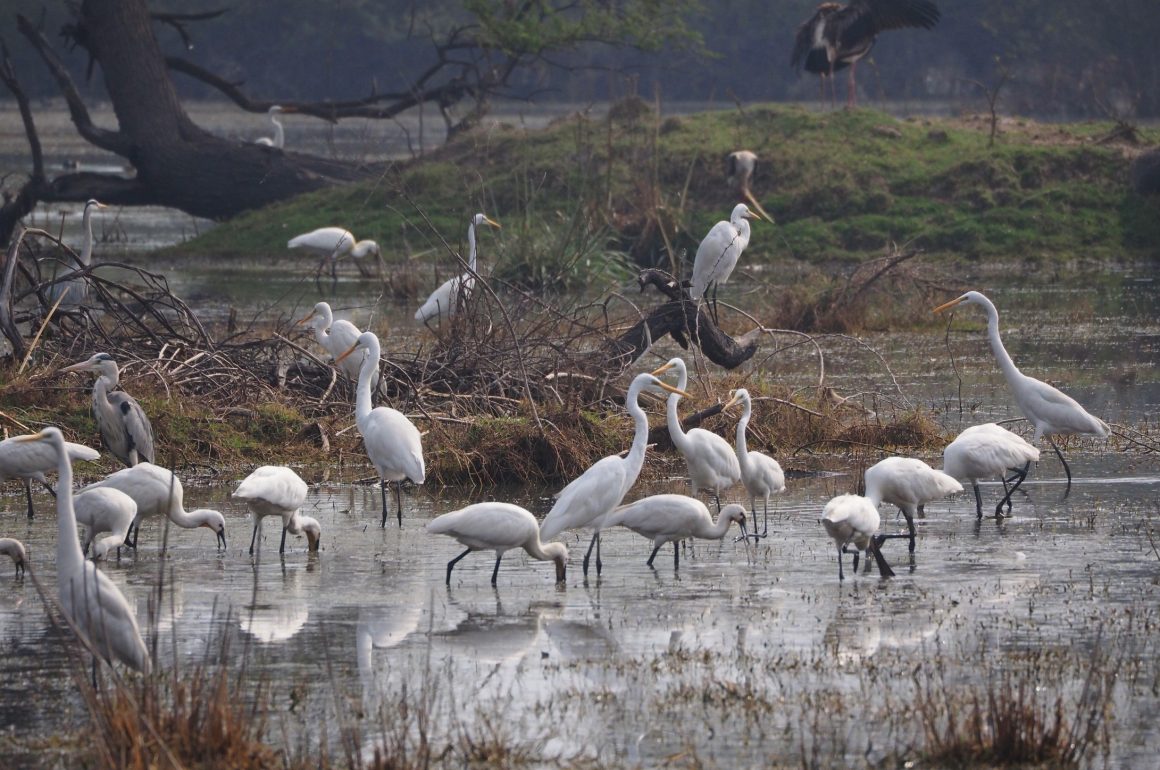
Is Bharatpur the best bird reserve in the world? I have been lucky enough to travelled across six continents looking for birds: in my humble opinion the Indian reserve of Bharatpur offers what is arguably the easiest, most varied and most exciting birdwatching of anywhere I’ve ever been. It is one of those places that will never fail to surprise you, however many times you have visited it.
Though everyone calls the reserve Bharatpur, that’s the name of the nearest city, for its officially called Keoladeo Ghana National Park. It’s in the northern Indian state of Rajasthan, and is about 85 miles south of New Delhi, or an hour and half’s drive west of Agra, home of the Taj Mahal. Surprisingly, the reserve isn’t natural, but was the creation of one of the Maharajas of Bharatpur. He was a keen sportsman, and during a visit to late Victorian England he enjoyed the duck shooting. He returned home inspired to create his own duck shoot where he could host both British and Indian nobility. The shoot was created by deepening and extending an area of marshland, and making it accessible by building a series of dykes and tracks.
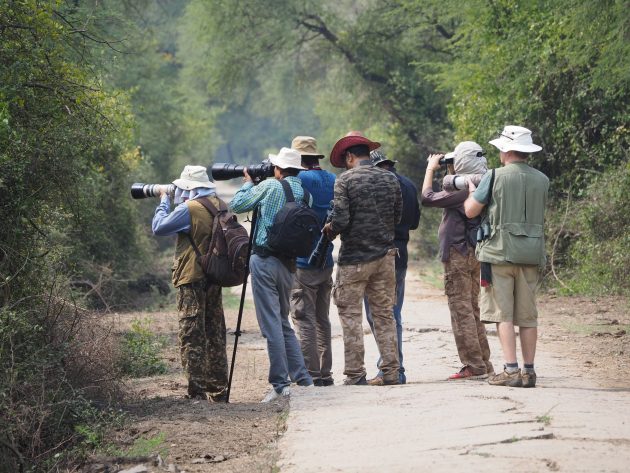
Bharatpur is a bird photographer’s paradise
The new duck marsh was a great success, attracting huge numbers of birds. The first official shoot was in December 1902, when his guests were the Viceroy of India, Lord Curzon, and Lord Kitchener, then Commander in Chief, India. Seventeen people shot 540 ducks between them. This, however, was nothing compared to the bags made in later years. The biggest was in 1938 when a shooting party headed by the then Viceroy, Lord Linlithgow, shot no fewer than 4,273 birds in one day. These prodigious bags are remembered in stone plaques still standing in the heart of the reserve today.
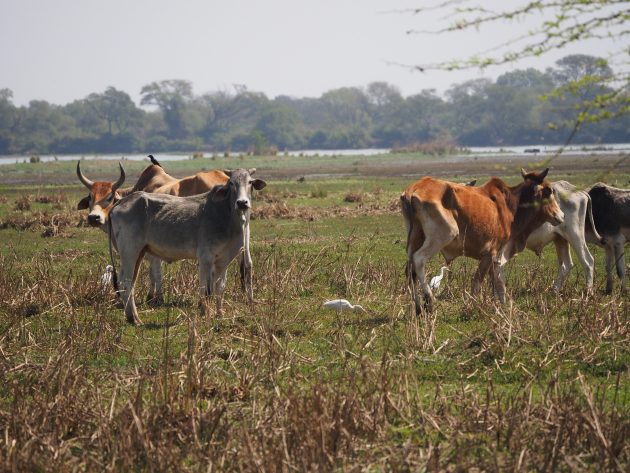
Uncontrolled grazing by intruding cattle is a long-standing problem on the reserve
Care for the area and its wildlife was assumed by the Rajasthan Forest Department in 1956 and the last shoot was in 1964; in August 1981 it was declared a National Park. Despite its protected status, it has (and still has) serious problems to contend with, ranging from lack of water (it has virtually dried out several times) to local people grazing their cattle within its boundaries.
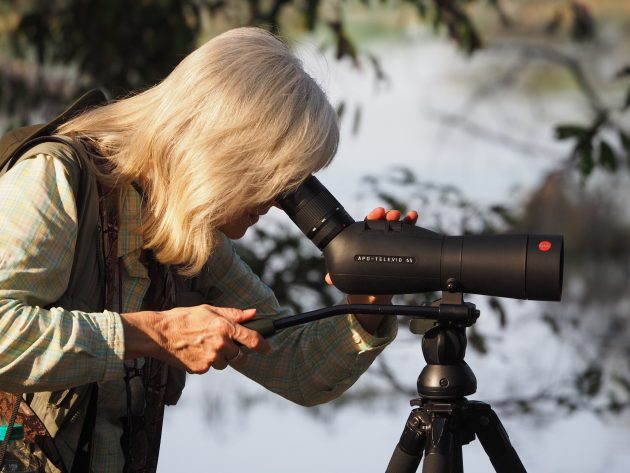
It’s easy to see 100 or more species in the day at Bharatpur
Go to any African wildlife reserve and you are likely to see more overseas visitors than locals, but this isn’t the case at Bharatpur, for it is very popular with Indians, and many thousands visit every year. Most carry cameras, often with long lenses, but binoculars are few. However, even without binoculars there’s a lot to see, for many of the birds to be found in the park are big and spectacular.
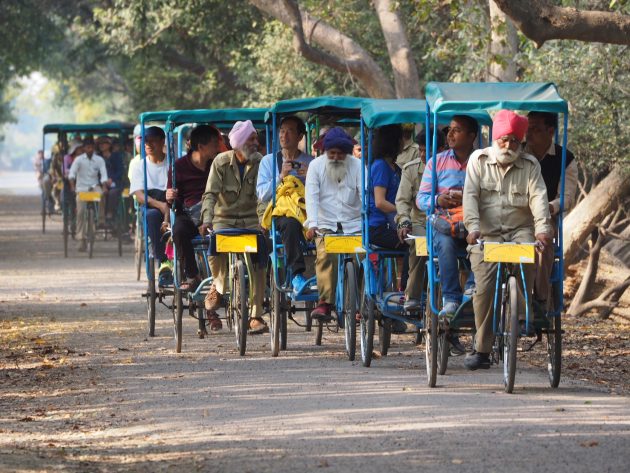
Bicycle rickshaws heading into the reserve in the early morning
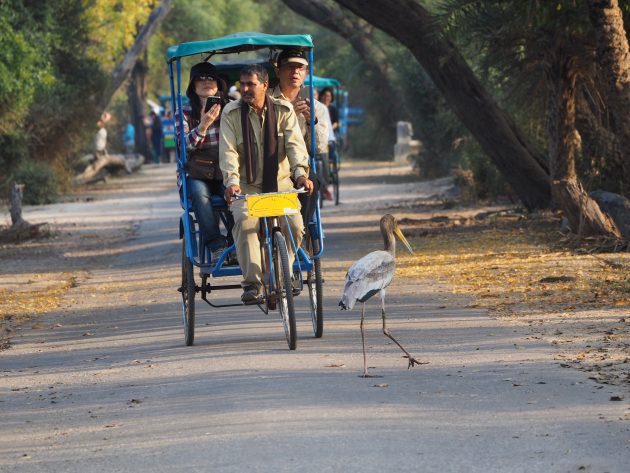
Birds – this is a juvenile Painted Stork – have priority
Though it may be primarily a wetland reserve, its 29sq km includes areas of semi-arid woodland, open savannah, scrub, groves of mature trees and swamps and reedbeds. It’s a diverse mixture that ensures you can see a great variety of birds in any month of the year, but it is the so-called winter months when the park is packed with migrants from the north that the birding is at its best. Human visitor numbers are at their lowest during the monsoon, though this is the breeding season for many of the resident or locally migrant birds. One of the park’s great charms is that is forbidden to take a vehicle inside, and nearly all visitors travel by either bicycle rickshaw or bicycle or on foot. The ideal way to explore the reserve is a combination of bicycle rickshaw and walking: many of the rickshaw drivers know where to find the more elusive birds.
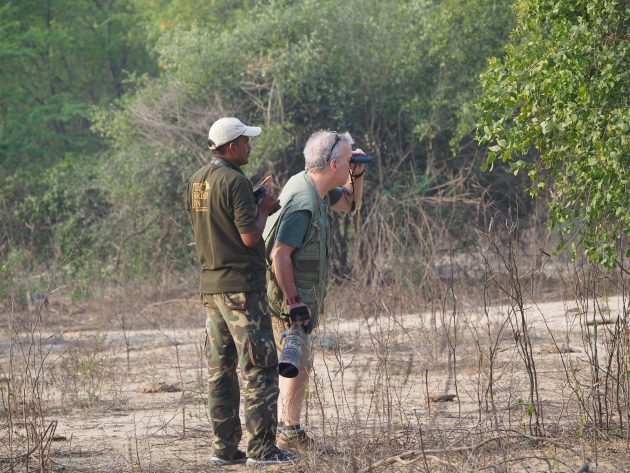
Birding in Bharaptur is exclusively on foot, or by bicycle rickshaw. Here the bird being looked for is an Indian Thick-knee or Stone Curlew (below), a bird that is always a challenge to see
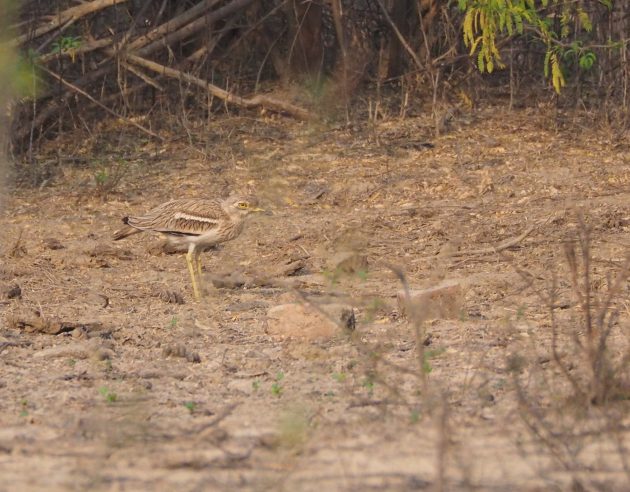
On my most recent visit I was introducing the delights of the park to four friends, one English and three American, while we also enjoyed the services of a local professional bird guide, Gajendra Singh, so we hired three rickshaws. Birdwatching is always at its best early in the morning: we were staying in a hotel within a couple of hundred yards of the reserve, so enjoyed a 6.30 breakfast, and were inside the park at 7am. It was cool first thing, but shorts and a t-shirt were fine, as it soon warms up.
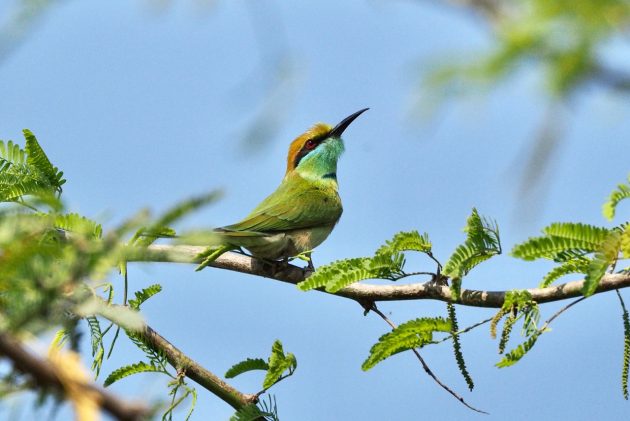
Green Bee-eater, a common resident on the reserve
Almost at once we were seeing good birds. Several Spotted Owlets were pleasing: this common Indian species is not dissimilar to our European Little Owl, and often sits out during the day. Rather more exciting were an adult and two juvenile Dusky Eagle Owls that peered down on us with dull yellow eyes. This is a seriously big owl, slightly larger than the Eurasian Eagle Owl that also occurs in India.
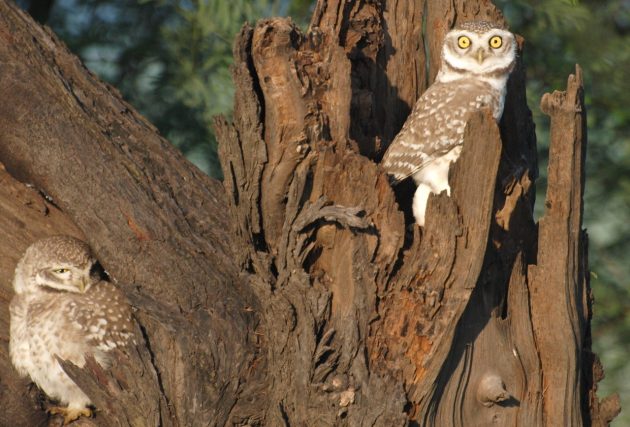
Spotted owlets – often to be seen during the day
In the thorn bushes around us were many small passerines, and at times it was difficult to know where to look. Green Bee-eaters are one of India’s commonest birds, but with their graceful flight and cheerful trilling calls they are always a delight. A fine cock Siberian Stonechat must have been a wintering bird, while the sparrow-like Chestnut-shouldered Petronias proved to be very common. India has several handsome species of starlings but none are better looking than the Brahminy,.
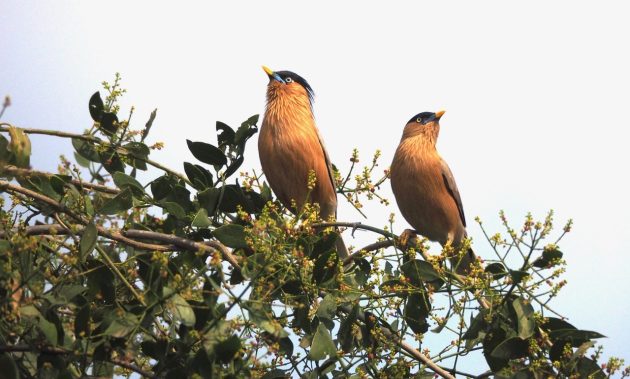
A pair of Brahminy starlings
Next we ventured into an area of woodland with big, mature trees. In the past I’ve seen nightjars here, but no luck today, while the resident Orange-headed Thrushes also proved elusive, but there were plenty of compensations. Outstanding among them were the exquisite Red-breasted Flycatchers, such challenging birds to see on their breeding grounds in eastern Europe, but so easy here. Brown-headed Barbets called, while a pair of Grey Hornbills allowed themselves to be admired.
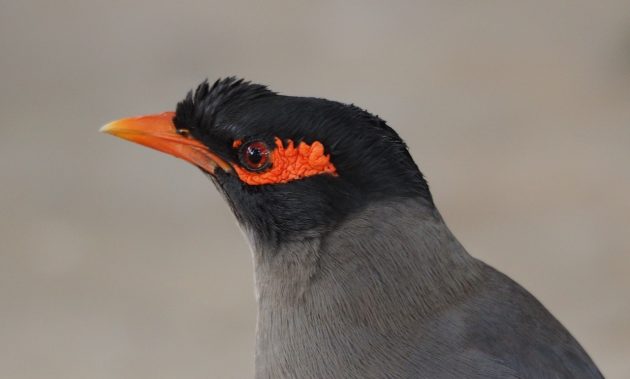
Portrait of a Bank Myna
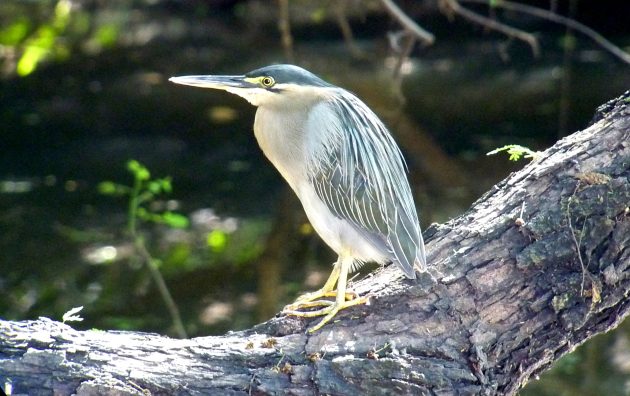
Striated heron
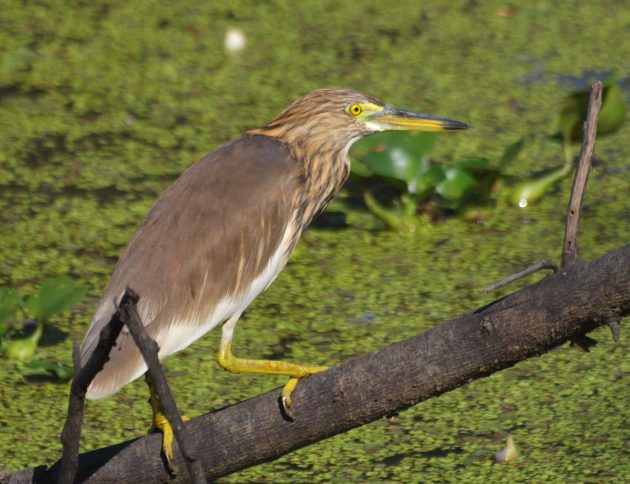
Indian Pond Heron
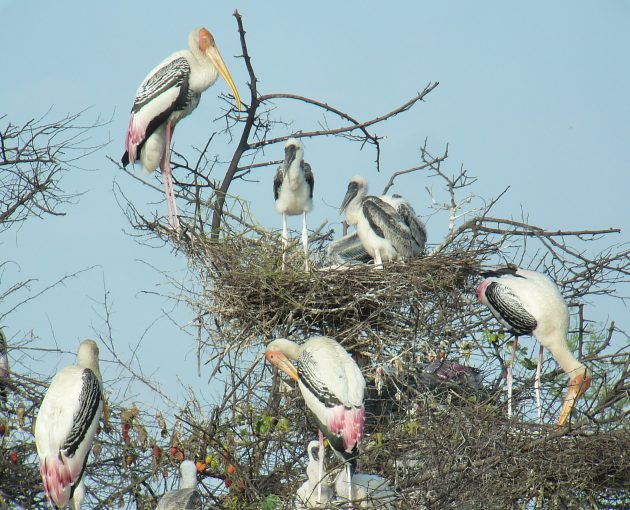
Painted Storks
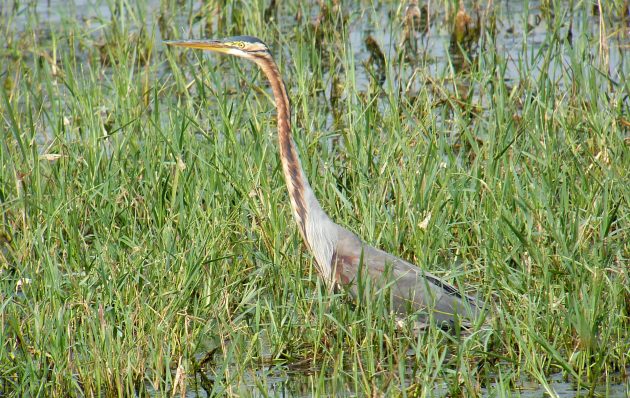
Purple Heron
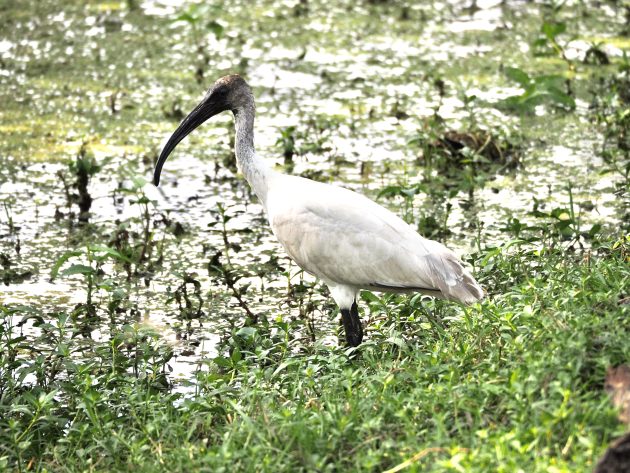
Juvenile Black-headed Ibis
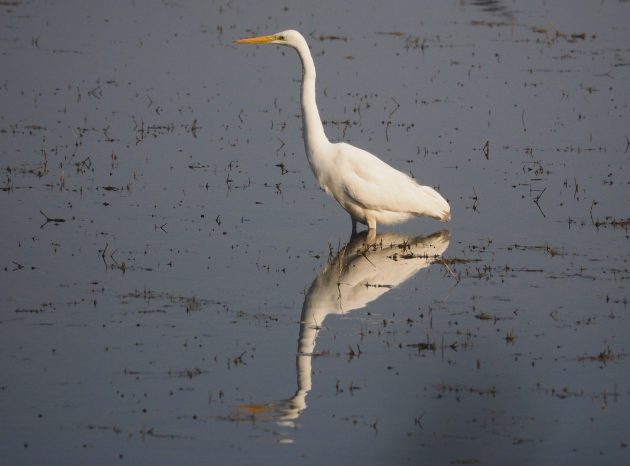
Great White Egret
Carrying on into the reserve, we soon started seeing a wide variety of waterbirds, including several species of herons and egrets – Cattle, Little, Intermediate and Great Egrets, Purple, Grey, Striated and Indian Pond Herons – along with Spoonbills and Black-headed Ibises. Painted Storks are resident breeding birds. Various species of rails and crakes are easy to see, with the most impressive the big Purple Swamphen. The race here is poliocephalus, which is sometimes regarded as a full species, the Grey-headed Swamphen, but is lumped in the latest AviList.
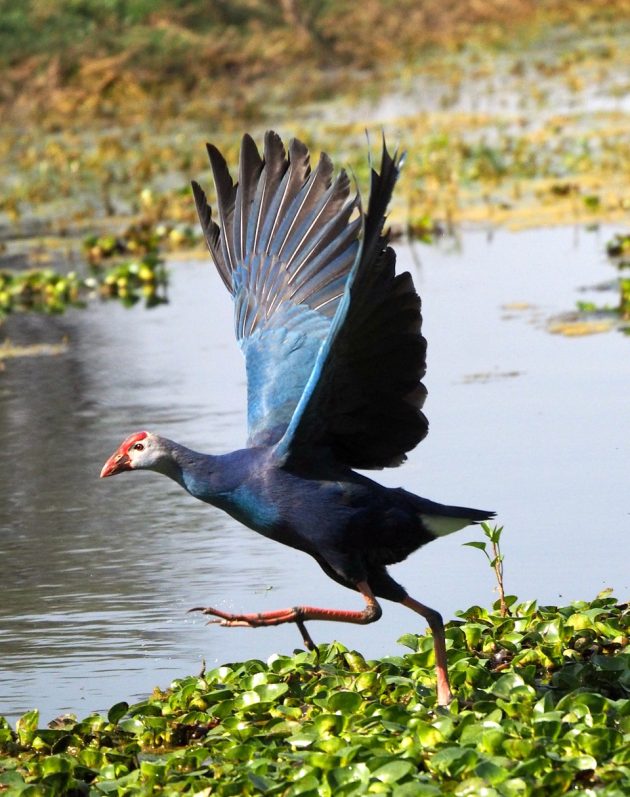
Purple Swamphen – the biggest of the rails
As you might expect, kingfishers are common, with the handsome White-throated conspicuous and easy to see. The widespread Common Kingfisher, the bird we have in Europe, is also numerous and remarkably confiding.
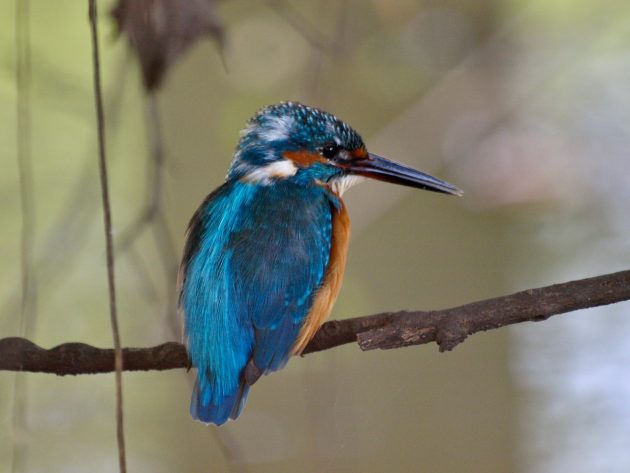
Common Kingfisher- colourful and confiding
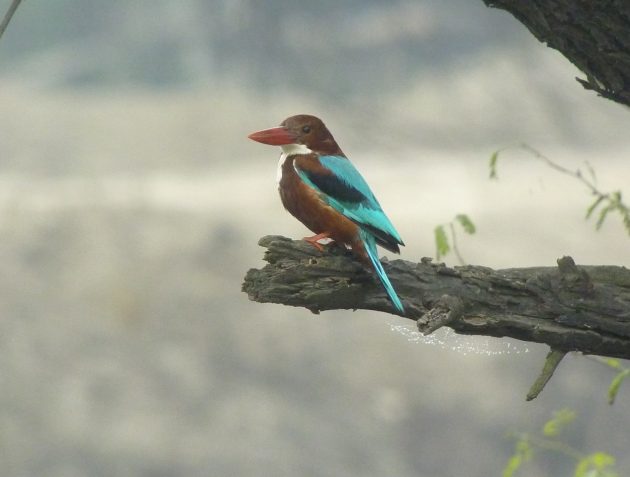
White-breasted kingfisher
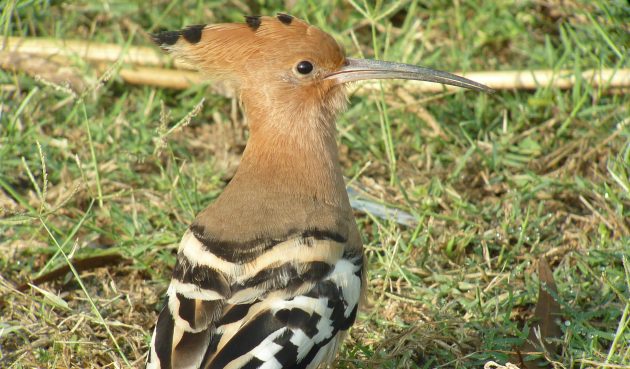
Hoopoe
Hoopoes are common and ridiculously tame, but that’s also true of most of the birds on the reserve, making it a photographer’s paradise. Bank Mynas will join the House Crows in the hope of sharing your lunch, but do watch out for the resident monkeys (Macaques) that don’t want to share your lunch, but simply want to steal it. I ended up slapping a Macaque that brazenly tried to grab my sandwich. My reaction was instinctive but unwise, as these monkeys have formidable teeth which they are not reluctant to use. However, I took the monkey by surprise, and he fled, much to my relief.

The Macaques have formidable teeth
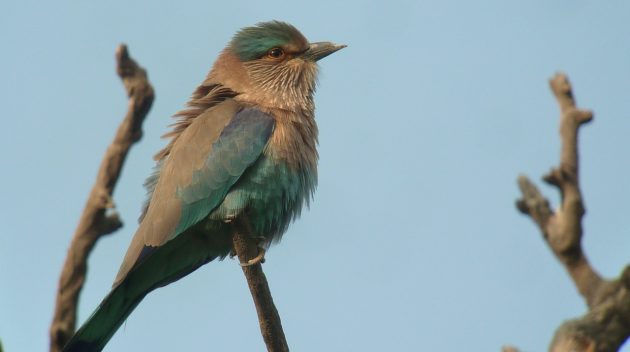
Indian Roller
On my first visit to Bharatpur, back in 2010, access to parts of the reserve was restricted due to the presence of a wandering Tiger. This was highly unusual. I was rather hoping to see the cat, but though we were shown his footprints (pug marks) we didn’t get a glimpse of the animal himself. Though your chances of encountering a Tiger are unlikely, you will see big game, with the impressive Nilgai, a largest species of Asian antelope, common.
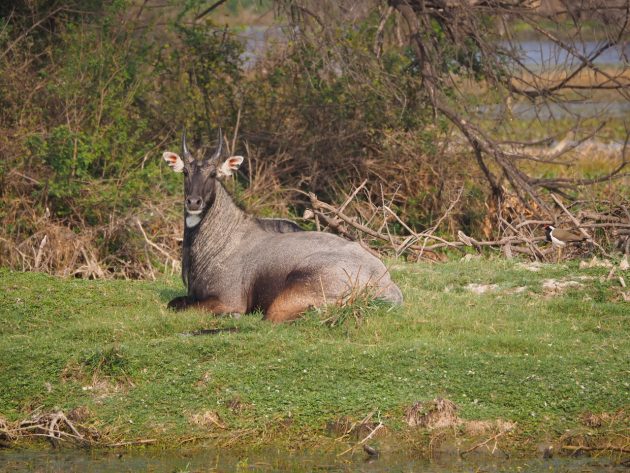
Nilgai resting (above) and (below)with Eurasian Coots)
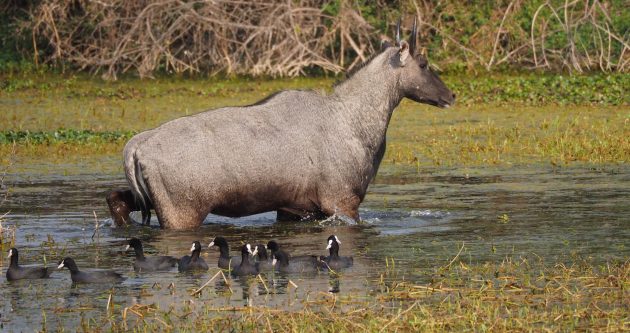
However, the reserve was originally created as a duck shoot, and it still attracts great numbers of wildfowl of a wide variety of species: I will discuss these in my article next week.
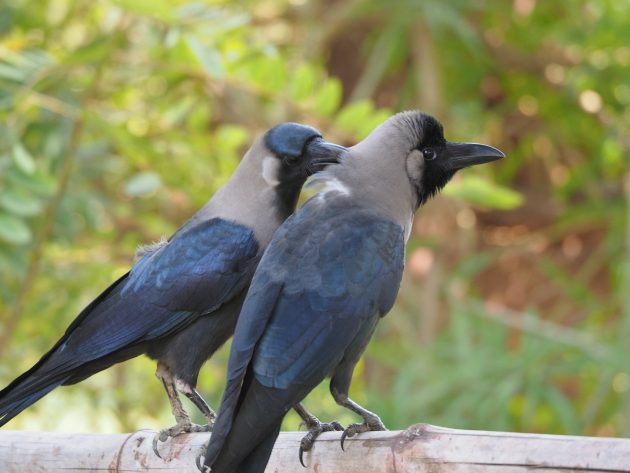
Indian House Crows



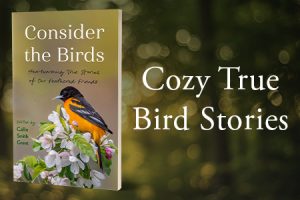


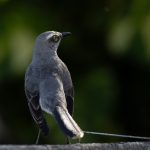
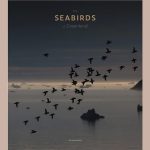

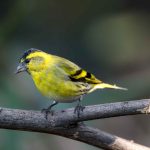
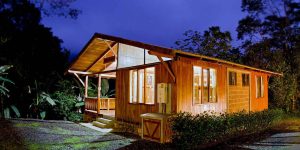
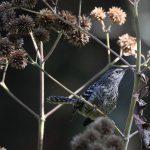
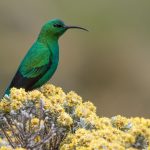
On one of those rare holidays NOT for birding we drove past Bharatpur on our way to the Taj Mahal. Although the monument didn’t disappoint I still felt the pang of missing out on this park and David’s article brought back the painful memory. The Taj Mahal is a monument of love, but my personal sacrifice is comparable, I feel. Thanks David, for rubbing it in 😉
I may be a peasant, but I enjoyed Bharatpur far more than the over-crowded (but still impressive) Taj Mahal. The two are quite close, so it’s easy to visit both on the same trip. Incidentally, the Taj had a nesting pair of Egyptian vultures.
Thank you David, for allowing me to relive this trip through your excellent article. I agree, this must be in the running for the best Bird Reserve in the world., and I loved birding by rickshaw!
This is a wonderful and chock-full of information post. I am saddened to say that I have been to this part of India, but have never been to this park. As I was reading, I was wondering how I could get back to India to visit Bhatatpur. Your macque story reminded me of a langur story I experienced at the temple in Ranthambore. My companion for this temple visit, an older woman on the frailer side, was wearing a necklace of marigolds that, I think, she was gifted upon entering the temple. We were relaxed and walking and talking. Out of nowhere a langur rushed over jumped up near her face and snatched the necklace from around her neck. We were so startled. I thought my companion would be frightened, but she took the surprise theft completely in stride. The langur left the scene of the crime and sat a short distance away and began eating the flowers. We briefly watched it and laughed. India is such a marvelous place to visit. As David suggests, it can’t be beat. I’m envious because it seems he has visited often.